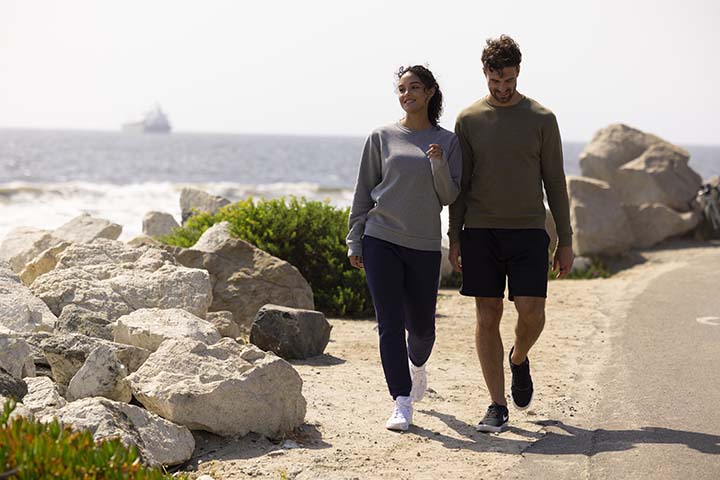Strategy September 12, 2022
Decorating Design Details: Techniques & Tips for Success
In the world of promotional apparel, there are many options for decorating techniques. This can be a bit overwhelming, especially to those who are new to the industry. Because of this, we reached out to Next Level Apparel (asi/73867), a leader in the premium blank apparel industry, to find out more details on each unique technique and to discover expert tips on how to get the best results.
Before we get into that, let’s review a little history on how NLA put its name on the map in the first place! NLA has been designing and supplying premium blank apparel since 2003. They first put their stamp on the map as a blank apparel pioneer in the promotional products industry by answering customers’ needs for T-shirts that could sublimate well. The tactical and technical requirements were for tees that were lightweight, breathable and comfortable for people to wear while also having a smooth poly-rich surface for sublimation. Thus, the Unisex Festival T-Shirt (6200) was born, created with a 65% poly/35% combed ring-spun cotton fabric.
Now that you have the scoop on NLA, let’s get down to the details on the decorating business!
SUBLIMATION is a specific process of printing that first involves printing onto a special sheet of paper and then transferring that image onto another material (usually polyester or a polyester mix). The ink is then heated until it disintegrates into the fabric. Note that while the process of sublimation printing costs more than other methods, it lasts longer and will not crack or peel over time, which can be the case with other printing methods. The foremost difference between heat transfer and sublimation is that with sublimation, it is only the ink that transfers onto the material.
TIPS:
- A temperature of 400° F is recommended for most products. Use moderate to heavy pressure - it should require some effort to close your heat press. Time and temperature may vary with heat press and the thickness of the fabric.
- Dwell times can be increased or reduced in 5-10 second increments until you find the time that results in the clearest image.
- Because sublimation is essentially a dye process, you get the best results when the fabrics are either white or light-colored.
- To eliminate the moisture variance of the transfer paper, place the printed transfer 2”-3” below the heat platen for 20-40 seconds. It is normal for the transfer to appear washed out.
- Not all 100% polyester is sublimation friendly, so blends are preferred (think NLA’s Festival Collection).
- Always use brand name inks and never use expired inks.
- Design in RGB for best results.
RECOMMENDED: FESTIVAL COLLECTION
- Lightweight Jersey. 40 Single, 120 grams, 3.5 oz.
- 65% Polyester/35% Combed Ring-Spun Cotton
FEATURED STYLE: Unisex Festival T-Shirt (6200)
DIRECT-TO-GARMENT (DTG) is the process of printing on textiles using specialized aqueous ink jet technology. Think of it like a giant inkjet printer, but for shirts. Typically, DTG printers have a platen design to hold the garment in a fixed position. Then, the printer inks are jetted or sprayed onto the textile by the print head. Essentially, DTG printing is a process of printing graphics onto garments. It uses modified inkjet technology to print whatever graphic your clients want onto the shirt – except rather than printing out lengthy thesis papers or flyers for your book club, NLA’s DTG machines are printing fierce dragons jumping through hoops of burning unicorns, or maybe a cute lil’ bunny rabbit for your clients’ kid’s birthday party. NLA is here to print whatever your clients ask for (but let’s be honest, they’d prefer the dragons!)
DTG printing is a fairly new method that allows for a lot of variation compared to screen-printing, which has dominated the customized t-shirt market for decades. DTG printers can also print over 16 million colors directly to shirts in one single pass, so colors are no obstacle for this technique.
TIPS:
- DTG printing works best with premium 100% combed ring-spun cotton shirts, but also works on premium quality blends.
- Run several tests before final printing to ensure color and design fastness.
- Polyester should generally be avoided for DTG printers as poly material is designed to repel water (a significant problem, given that DTG ink is water-based). While it can be done, the process is more complicated.
- Practice placement. Use a measuring device for accuracy. If you add a set of platens, you’ll be able to move more shirts through.
RECOMMENDED: SANTA CRUZ COLLECTION
- Cotton Poly blend. 30 Single, 250 grams, 7.4 oz.
- 80% Cotton/20% Polyester Fleece/100% Cotton face
FEATURED STYLE: Unisex Santa Cruz Hoodie (9303)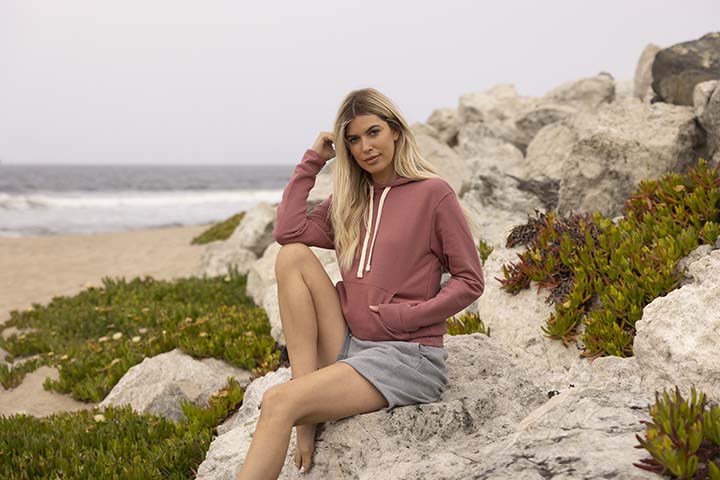
DIRECT-TRANSFER-FILM (DTF) uses a special DTF printer that allows printing of highly detailed designs onto a piece of film before it then transfers it directly onto the fabric. The reason this technique is rising in status lately is because of the variety of fabric surfaces it can print on. DTF printers combine reliability, quality and high productivity. They can handle large production volumes, which is essential in this fast-growing industry.
For quality results, you will need DTF powder and DTF sheets to print transfer film, as well as DTF Ink. This method is great for clearly printing tiny craft lines and small letters. This technique also means there is no risk of chromatic aberration and colorfastness. The ink, once cured, is locked in color and so you don’t have to worry about it changing over time. The patterns and text printed by the DTF printer are very clear and the hot stamping prevents fibrillation that sometimes happens with traditional methods. DTF is also compatible with a wide variety of fabrics including cotton, nylon, polyester, tri-blends and 50/50 blends.
Another reason DTF printing is preferred by many? There is no question that the market, and especially the fashion industry, is focused on sustainability right now. Reducing the pre-treatment step is better for the environment, and by reducing overspray associated with other methods, purchasing a DTF printer is something most T-shirt companies will want to consider.
TIPS:
- Invest in a high-quality DTF printer and use premium quality apparel.
- Choose artwork that is designed to let the garment color show through.
- Software is an important element of DTF printers. For DTF printers you will need specialized RIP software to handle your white and CMYK colors.
- DTF printers use PET films with a thickness of 0.75mm, making them better at transferring details than screen printing. These films are also known as “DTF Transfer Films” in the market.
- Use printer ink that is specifically designed for use with the DTF process. This eliminates the use of rollers that could cause the page to slide and preserves the appearance of any lines on the white layer print. DTF printers are equipped with multiple color ink tanks, allowing them to operate using CMYK settings.
RECOMMENDED: SUSTAINABLE COLLECTION
- Lightweight Jersey. 30 Single, 145 grams, 4.3 oz.
- 40% Recycled Polyester (RPET)/30% Recycled Cotton/30% Combed Cotton
FEATURED STYLE: Unisex Eco Heavyweight T-Shirt (4600)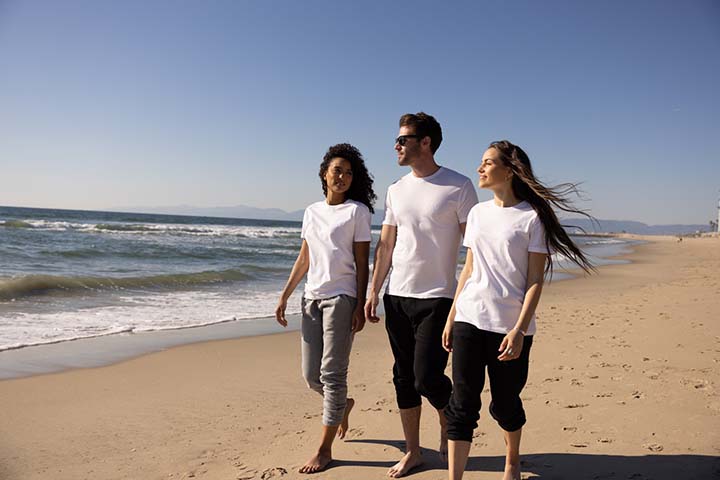
SCREEN PRINTING is the oldest and most common imprinting method in which the image is transferred to the fabric. Ink is squeegeed through a stenciled screen stretched over a frame and is then cured in a dryer. There are three common types of screen printing: with water-based ink, plastisol and discharge.
TIPS:
- Smooth out fabrics with high fiber and a soft hand before drying to avoid it having a rough, spike-like feel.
- Polyester blends, pigment-dyed fabrics and neon colors are heat sensitive and cannot exceed temperature thresholds higher than 320 degrees or else shrinkage, bleeding or spot staining may occur. Use only low cure materials and a gray barrier base bleed blocker on dark colors.
- Not all 100% cotton products or colors can be discharged (including pigment dyed, neons & white).
RECOMMENDED: TRI-BLEND COLLECTION
- Tri-Blend Jersey. 32 Single, 145 grams, 4.3 oz.
- 50% Polyester/25% Combed Ring-Spun Cotton/25% Rayon
FEATURED STYLE: Unisex Tri-Blend T-Shirt (6010)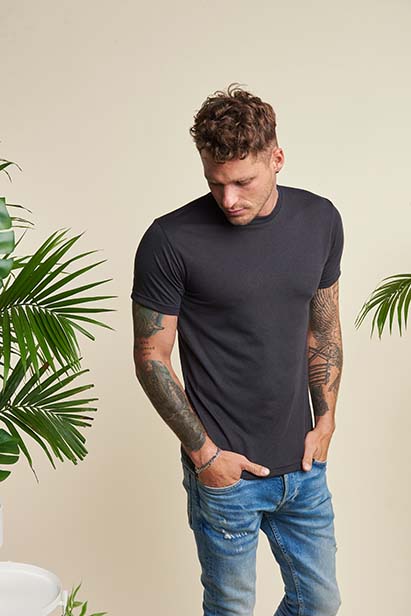
HEAT TRANSFER, also known as thermal printing, thermal-transfer printing and thermal-wax transfer, is a method of printing that allows you to print a design onto a piece of fabric. Heat transfer printing uses the process of heat to transfer an image created in wax to an object or garment. This printing method is compatible with pre-painted images on a wax sheet or can be used to create an image by layering wax dye onto an object with a heat press machine. A heat press machine works by using heat and pressure to apply the design to the garment.
TIPS:
- Heat transfer is most compatible with fabrics that are 50% or greater cotton content.
- Before you apply heat to your vinyl designs or transfers, always preheat your base and garments. This removes wrinkles & moisture and allows the design to adhere to the garment better.
- Polyurethane films are the preferred medium for T-shirt heat transfer.
RECOMMENDED: THE ORIGINAL CVC JERSEY COLLECTION
- CVC Jersey. 32 Single, 145 grams, 4.3 oz.
- 60% Combed Ring-Spun Cotton/40% Polyester
FEATURED STYLE: Unisex CVC Long Sleeve T-Shirt (6211)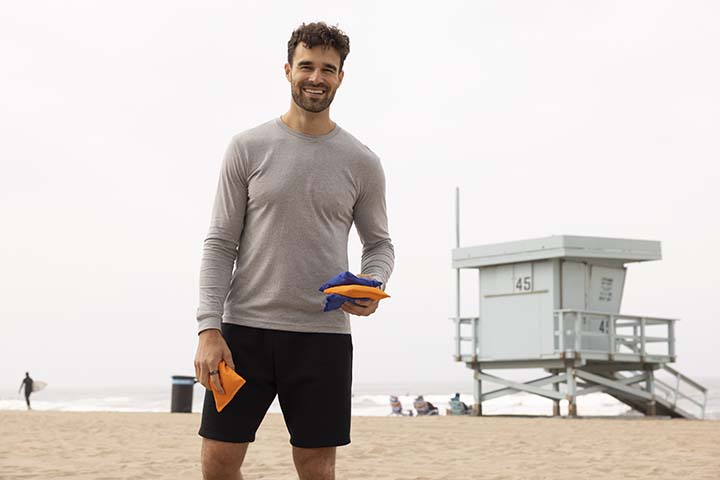
ALSO RECOMMEDED: THE ORIGINAL SUEDED COLLECTION
- Sueded Jersey. 32 Single, 145 grams, 4.3 oz.
- 60% Combed Ring-Spun Cotton/40% Polyester
FEATURED STYLE: Unisex Sueded Long Sleeve T-Shirt (6411)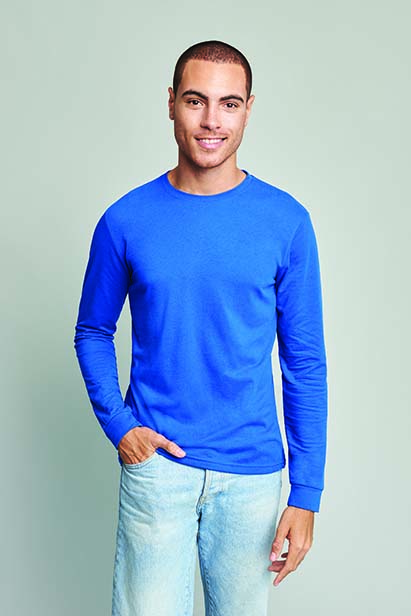
EMBROIDERY is one of the highest-quality possibilities of textile refinements. Durability, feeling and washability of the applied company logo, motif or the promotion message simply can’t be beat by other printing methods. The essential difference is the amount of automatically changing needles, which ranges from 6 up to 18. This dictates the amount of usable colors in one motif. Embellishments such as beads, pearls or ribbon can also be incorporated to provide additional texture.
RECOMMENDED: LAGUNA FRENCH TERRY SUEDED COLLECTION
- Midweight Sueded French Terry. 30 Single, 280 grams, 8.3 oz.
- 60% Combed Ring-Spun Cotton/40% Polyester Fleece
FEATURED STYLE: Unisex Fleece Quarter Zip (9643)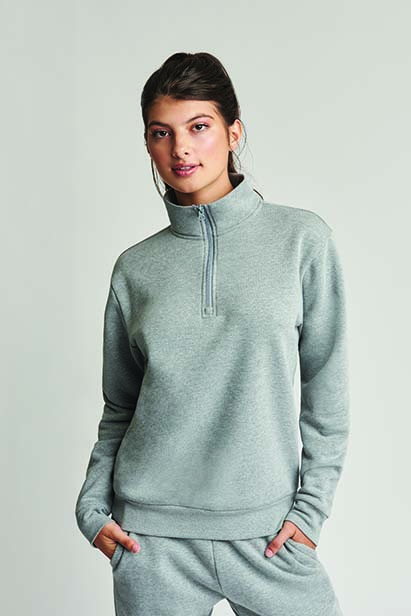
ALSO RECOMMENDED: MALIBU COLLECTION
- 30 Single, 250 grams, 7.4 oz.
- 60% Combed Ring-Spun Cotton/40% Polyester Fleece
FEATURED STYLE: Unisex Malibu Sweatshirt (9002)